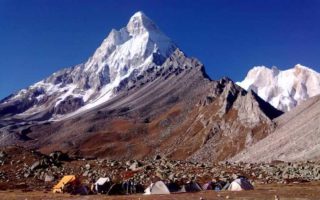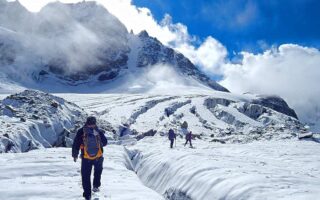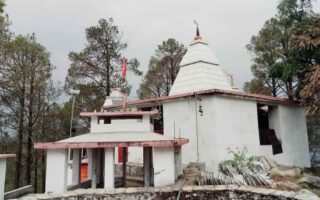Hinduism allows great freedom for devotees to worship their favorite god. There are Vaishnavites who love to worship Lord Vishnu in all his avatars and undertake pilgrimages to all the Panch Badri. There are Shakti devotees who circumambulate the country in a pilgrimage of all Shaktidhams. Then there are devotees of Lord Shiva who visit the many Shiva temples of which the Panch Kedar hold top spot.
The Panch Kedar in General
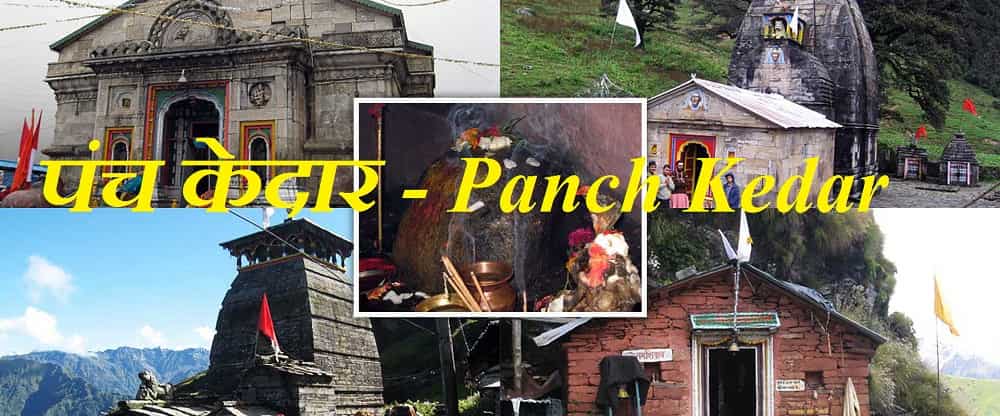
The Garhwal region is home to Panch Kedar and it is known as Kedar Khand. Kedar is another name of Lord Shiva and he reigns supreme in the western part of Garhwal comprising half of Chamoli. The Panch Kedar in order of importance are Kedarnath, Tungnath, Rudranath, Madhyamaheshwar and Kalpeshwar.
According to legend the Pandavas sought Lord Shiva to seek pardon for the sin of killing their kin but the Lord did not wish to grant pardon and hid himself. In a bid to divert them he turned himself into a bull and then split his body parts. The hump remained at Kedarnath, the arms at Tungnath, the face at Rudranath, the navel at Madhyamaheshwar and the hair at Kalpeshwar. The Panch Kedar Yatra usually starts at Rishikesh and one travels to Gaurikund for the first trek to Kedarnath. The journey to Gaurikund takes pilgrims to Devprayag, Rudraprayag, Karnaprayag, Nandprayag and Vishnuprayag, the five confluences of holy rivers of this region.
Kedarnath – The First of the Panch Kedar
- Location: Situated in the Garhwal region of Uttarakhand, India.
- Significance: One of the twelve Jyotirlingas, considered one of the holiest shrines in Hinduism.
- Accessibility: Accessible by a challenging trek or helicopter, offering a spiritual and natural experience.
- Environment: Surrounded by the spectacular peaks of the Himalayas, including the majestic Kedarnath range.
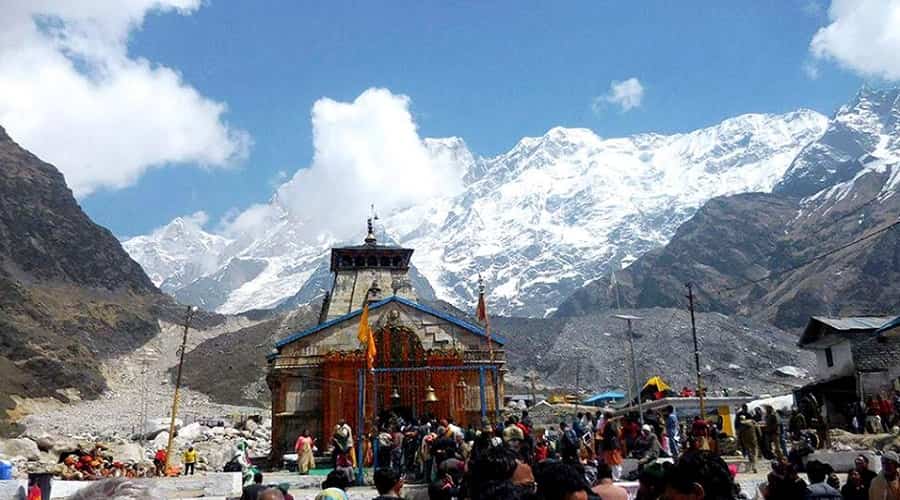
Kedarnath is at the top of the list of Panch Kedar and it also features in the Chota Char Dham Yatra in Uttarakhand. Located at a height of 3580 metres, the temple is made of gray stones. It has a Garbha Griha and a Sabha Mandap graced by a large idol of Nandi. The present temple is said to be built by Adi Shankaracharya in the 8th century but the site is ancient, dating back to the ties of the Pandavas who pursued Shiva to seek pardon for the sin of killing their kin. Lord Shiva transformed himself into a bull and split his body into several parts. The hump remained at Kedarnath. Of the char Dham, Kedarnath is the toughest since it involves a trek of about 14 kilometres from Gaurikund. This is one reason people undertake Chardham Yatra by helicopter since it affords an easy way to undertake the pilgrimage without the hardships. From there one returns to Ukhimath, about 43 kms from Rudraprayag before proceeding onwards.
Madhyamaheshwar – The Second of the Panch Kedar
- Location: Located within the Kedarnath Wildlife Sanctuary, Uttarakhand.
- Devotion: A sacred temple dedicated to Lord Shiva, forming part of the Panch Kedar pilgrimage.
- Elevation: Perched at an altitude of around 3,497 meters (11,473 feet) above sea level.
- Trekking Experience: Accessible via a trek from Ukhimath, providing opportunities to explore the region’s rich biodiversity and natural beauty.
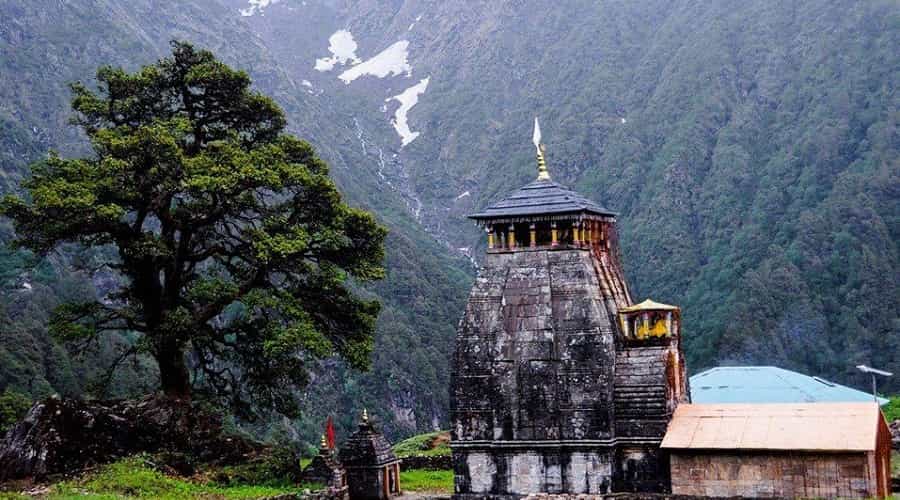
Madhyamaheshwar where the Nabhi or navel of Lord Shiva resides is at a height of 3,497 metres, about 30 kms northeast of Guptkashi. It is located a short distance from the Gaundar river and the whole region is picturesque with green slopes and trees on the mountains. The temple follows the traditional North Indian style of architecture and arti is performed at 7 AM in the morning and between 6 PM and 6.45 PM in the evening. Pilgrims usually start from Ukhimath or Guptkashi and reach Unaina village from where it is a trek of 21 km. There are Dharamshalas available for pilgrims at Madhyamaheshwar. The Pooja complete one can rest at the Dharamshala or proceed to Kalpeshwar.
Tungnath – The Third of the Panch Kedar
- Location: Found in the Rudraprayag district of Uttarakhand.
- Altitude: The highest Shiva temple globally, at 3,690 meters (12,073 feet) above sea level.
- Unique Features: Part of the Panch Kedar group, known for its architectural beauty and panoramic mountain views.
- Access: Reached through a scenic trek from Chopta, often called the “Mini Switzerland of India.”
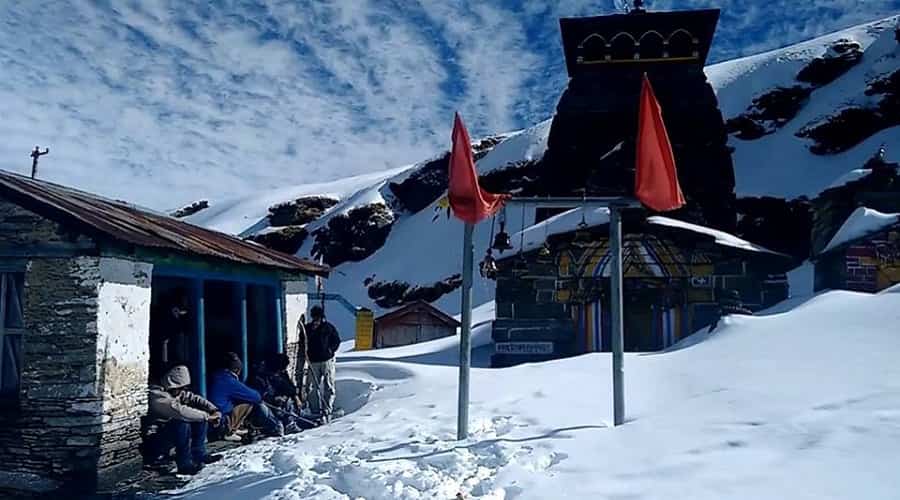
Tungnath, the second of the Panch Kedar in Uttarakhand, has the distinction of being the highest Shiva temple at a height of 3690 metres, close to the Indo-Chinese border. Pilgrims usually arrive at Chopta and then climb 3 kilometres uphill to reach Tungnath that is shadowed by the Chandrashila Mountain at a height of 3886 metres. It is said that the Linga here is Swayambhu meaning self appeared. The temple is quite ancient and, like other Shiva temples, it has an idol of Nandi at the entrance. The main Garbhagriha houses the Linga while there are smaller temples housing idols of Parvati and Vyasa. Aarti is performed here in the morning between 6 and 7 AM and in the evening at 6.30 PM. From here one proceeds to Gopeshwar to reach the next destination, Rudranath.
Rudranath – The Fourth of the Panch Kedar
- Location: Situated in the Garhwal Himalayas of Uttarakhand.
- Worship: Dedicated to Lord Shiva and a key shrine within the Panch Kedar circuit.
- Adventure: Requires a challenging trek through dense forests and alpine meadows to reach its serene location.
- Scenic Beauty: Offers a peaceful and untouched setting in the lap of nature, making it a rewarding pilgrimage destination.
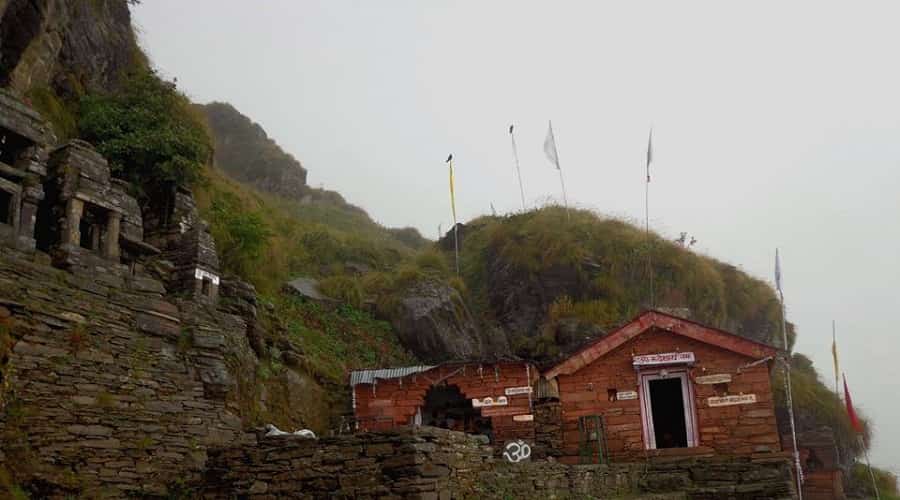
Unlike Tungnath, Rudranath is located at a lower height, about 2286 metres and it is surrounded by thick forests. The temple is set against a backdrop of wooded mountains and here the face of Lord Shiva is worshipped as Neelkanth Mahadev. Perhaps this is the only temple in India where his face is worshipped instead of the usual lingam. One can drive up to Gopeshwar and then trek the rest of the way to the temple. The region being more hospitable there are Dharamshalas for pilgrims. One can stay overnight or proceed to Guptkashi to reach the next of the Panch Kedar, Madhyamaheshwar.
Kalpeshwar – The Fifth of the Panch Kedar
- Location: Found in the Chamoli district of Uttarakhand, India.
- Worship: A temple dedicated to Lord Shiva, forming one of the Panch Kedar temples.
- Distinct Feature: Known for its unique natural rock Shiva lingam located in a small cave.
- Accessibility: Relatively more accessible compared to the other Panch Kedar temples, making it a popular pilgrimage destination for devotees.
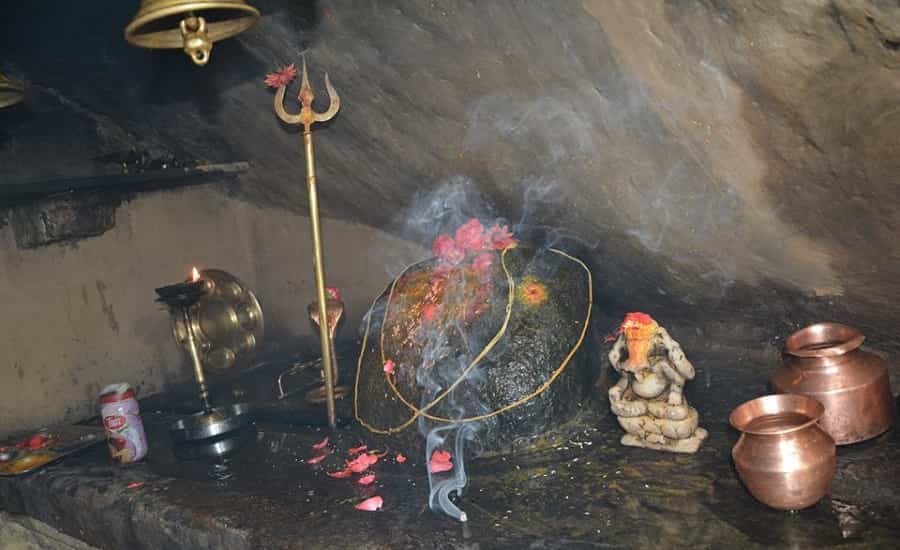
Kalpeshwar is the 5th of the Panch Kedar located in Urgam Valley at a height of 2200 meters. Lord Shiva is worshipped as Jatadhari here. Pilgrims usually travel to Joshimath and then onwards to Helang from where they drive to Urgam village. From here it is a short trek to reach Kalpeshwar. Thankfully, there are roads and one can drive to within a short distance of the temple. Morning Aarti is at 7 AM and evening Aarti is between 6 PM to 6 45 PM.
Best Time to Travel
Summer is the best time to undertake the Panch Kedar Yatra in Uttarakhand. This is the time when all the temples are accessible and are open to the public. The weather is cool but you may need woollens for the night. It is better to carry water bottles and something to eat and wear woollens and shoes when you trek. Wear goggles too to protect eyes against UV radiation. In winter the roads may be closed and idol from Kedarnath is brought down to Ukhimath and the idol from Tungnath is brought to Mokumath. The idol at Rudranath is brought to Gopeshwar and that at Madhmaheshwar to Ukhimath.
There are many opportunities for trekking and for visiting places of scenic beauty as one undertakes the Panch Kedar Yatra. Have plenty of time at your disposal and you can enjoy the beauties of the Garhwal region.
FAQs
What is the best time to visit Panch Kedar?
Ans: The best time to visit Panch Kedar is during the summer months, from May to June and September to October, when the weather is pleasant and the trekking routes are accessible.
How difficult is the trek to the Panch Kedar temples?
Ans: The difficulty of the trek varies from temple to temple, but most require moderate to challenging trekking skills. It’s essential to be physically prepared for the journey.
Are there accommodation options available during the trek?
Ans: Yes, there are basic accommodations available in the form of guesthouses and ashrams at various points along the trekking routes.
Can non-Hindus visit the Panch Kedar temples?
Ans: Yes, non-Hindus are welcome to visit the temples. However, it’s essential to respect the religious sentiments and traditions of the local people.
What should I carry during my Panch Kedar pilgrimage?
Ans: While specific requirements may vary, essential items include warm clothing, trekking gear, a first aid kit, and a positive attitude for the challenging journey.
